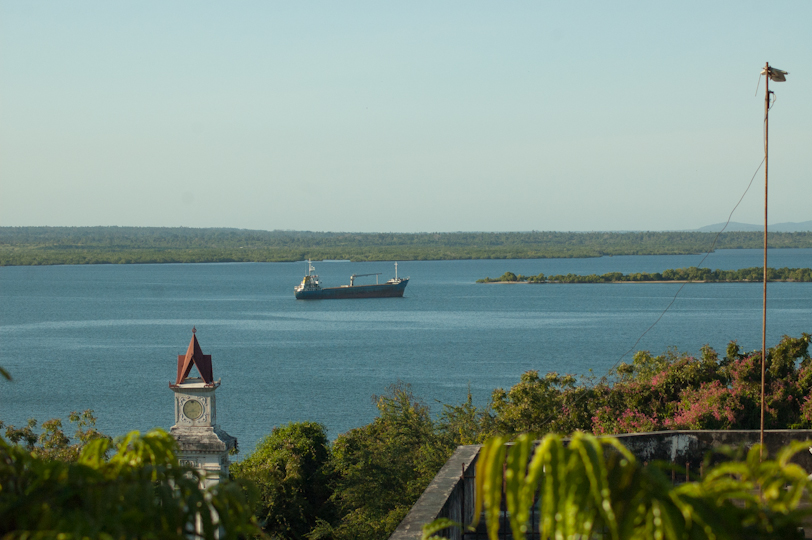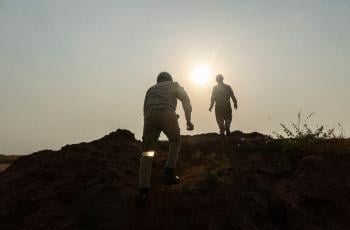Tony254
JF-Expert Member
- May 11, 2017
- 16,017
- 16,427
Huwa mnajisahau kwa maringo yenu. Nawaweka sawa.Nani kwani kasema tutakuwa na share kubwa kuliko Uganda? Uganda ndiye mwenye mali.
Punguza maumivu.
😅🤣😃
Huwa mnajisahau kwa maringo yenu. Nawaweka sawa.Nani kwani kasema tutakuwa na share kubwa kuliko Uganda? Uganda ndiye mwenye mali.
Punguza maumivu.
😅🤣😃
naona raha sana unapoandika kwa uchungu. hivi mafuta ya kenya vipi?Usisahau Uganda wana Tilenga na Kingfisher. Nyinyi mna 80% ya pipeline lakini Uganda wana share kubwa zaidi ya mradi wote ukijumulisha pamoja na oil production facilities. Kwa hivyo upunguze maringo. Uganda bado wana percentage kubwa wa mradi huu. Hata refinery itajengwa Uganda.
next week ndio watalia sana, a big thing is coming
EACOP construction is scheduled to start next week.
Wapi evidence?EACOP construction is scheduled to start next week.
hahah, kumbe jamaa yupoWapi evidence?
Hata sisi tutapata some contracts ya kusafirisha mizigo za Uganda. Logistics companies zetu zitashinda some of the tenders. Mombasa port itatumika sana kusafirisha mashine na vifaa vya Kingfisher na Tilenga kwa sababu Mombasa port hadi Tilenga au Kingfisher ni karibu kushinda Dar port hadi Tilenga au Kingfisher.
Hata sisi tutapata some contracts ya kusafirisha mizigo za Uganda. Logistics companies zetu zitashinda some of the tenders. Mombasa port itatumika sana kusafirisha mashine na vifaa vya Kingfisher na Tilenga kwa sababu Mombasa port hadi Tilenga au Kingfisher ni karibu kushinda Dar port hadi Tilenga au Kingfisher.
Kwahiyo tusaini GHA for EACOP with 15% stake ownership for both refinery and pipeline halafu mzigo upite Kunyaland? Mtangoja! FYI primary port for EACOP will be Tanga!Hata sisi tutapata some contracts ya kusafirisha mizigo za Uganda. Logistics companies zetu zitashinda some of the tenders. Mombasa port itatumika sana kusafirisha mashine na vifaa vya Kingfisher na Tilenga kwa sababu Mombasa port hadi Tilenga au Kingfisher ni karibu kushinda Dar port hadi Tilenga au Kingfisher.
Uzuri sio wewe unayechagua port gani itumike. Hizi kampuni zinaangalia shortest distance ili kusave costs. Tayari rigs za Tilenga na Kingfisher zilizotumika kufanya exploration zilipitia Mombasa. 80% ya Uganda's imports hupitia Mombasa. So hakuna cha kushangaza hapo. Longer route itacost more money and contractors wanajaribu kusave money.Kwahiyo tusaini GHA for EACOP with 15% stake halafu mzigo upite Kunyaland? Mtangoja! FYI primary port for EACOP will be Tanga!
The distance btn Tanga port to Lake Albert is shorter than Mombasa port to Lake Albert! TPDC is the owner too and an equal owner to UNOC!Uzuri sio wewe unayechagua port gani itumike. Hizi kampuni zinaangalia shortest distance ili kusave costs. Tayari rigs za Tilenga na Kingfisher zilizotumika kufanya exploration zilipitia Mombasa. 80% ya Uganda's imports hupitia Mombasa. So hakuna cha kushangaza hapo. Longer route itacost more money and contractors wanajaribu kusave money.
Kwenye host govt agreement mliosign hakuna mahali imeandikwa kwamba Dar port ndio port pekee itakayotumika kuimport vifaaKwahiyo tusaini GHA for EACOP with 15% stake ownership for both refinery and pipeline halafu mzigo upite Kunyaland? Mtangoja! FYI primary port for EACOP will be Tanga!
Not true. Lake Albert to Mombasa is 1,161 kmThe distance btn Tanga port to Lake Albert is shorter than Mombasa port to Lake Albert! TPDC is the owner too and an equal owner to UNOC!




Tilenga and EACOP are a concrete example of the application of the Group’s ambition and commitments to biodiversity. Significant resources have been mobilized to implement them in an exemplary way. For four years, the affiliate has been in close contact with the local people and has been striving to minimize the projects’ impact on the local community. We are proud to be a part of these major developments for the Group that promise to transform their host countries.
Nicolas Terraz, Vice President Total E&P Africa
